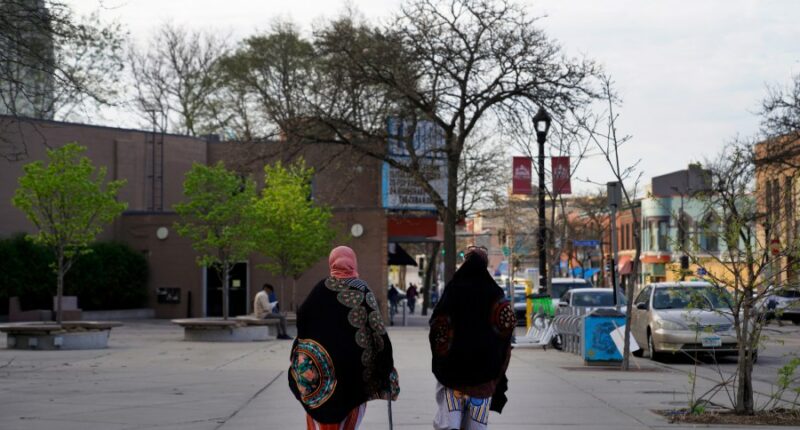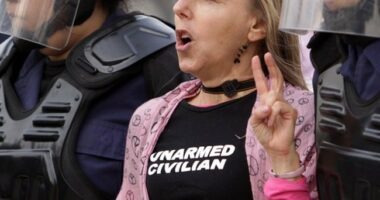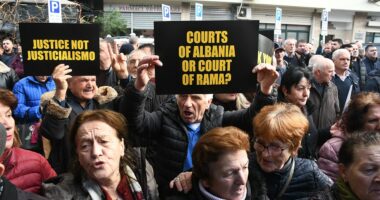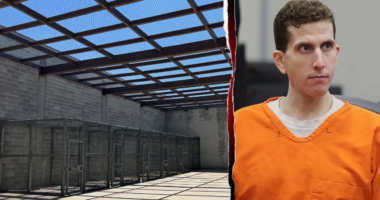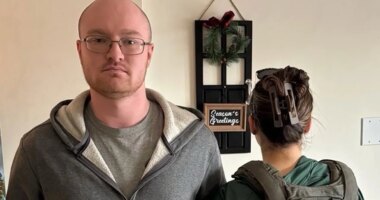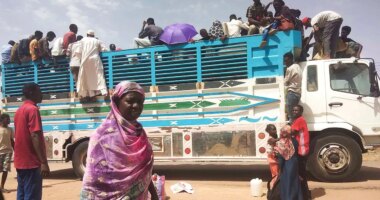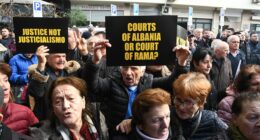Share this @internewscast.com

MINNEAPOLIS (AP) — A woman reflects on her arrival in the neighborhood over two decades ago, recalling streets lined with vacant storefronts and a pervasive sense of poverty.
Today, the Lake Street area in Minneapolis is bustling with vibrant businesses, many of which are operated by Somali refugees.
“Look at what we accomplished here,” remarked Nasra Hassan, a community health worker whose family escaped Somalia’s civil unrest to settle in Minneapolis. Her comment came just a day after the Trump administration drastically reduced the number of refugees permitted into the United States. “This place is thriving because of us,” she added.
Minnesota’s significant Somali population is one of the immigrant groups that transformed the Lake Street corridor, an area long welcoming to those starting anew in America. Across the city, there are numerous communities and refugee-established businesses. These newcomers fled violence in Mexico, war in Myanmar, and, more recently, conflicts in the Congo and Ukraine.
“Where would America be without us?” Hassan questioned.
The recent presidential directive limits annual refugee admissions to 7,500, marking a significant reduction of over 90% from the previous year’s ceiling of 125,000, and setting the lowest cap since the inception of the program in 1980.
Trump indefinitely suspended the refugee resettlement program — which historically had widespread bipartisan support — on his first day in office in 2025, part of his administration’s crackdown on immigration.
But the Thursday order marks a major break for a nation that has long seen itself as a refuge for people in need.
The directive “shut the door on our proud, centuries-long tradition of welcoming those fleeing violence and persecution, leaving thousands in limbo and many more in peril,” Murad Awawdeh, head of the New York Immigration Coalition, said in a statement. He called for “prioritizing those most at-risk, including Afghans, Sudanese, Congolese, Somalis, religious minorities,” and others.
Traditionally, refugee applicants must show a well-founded fear of persecution because of race, religion, nationality, membership in a social group, or political opinion.
But the Thursday announcement made specific mention of just one group: white South Africans.
Those admitted, it said, “shall primarily be allocated among Afrikaners from South Africa,” the descendants of Dutch and French colonial settlers, and “other victims of illegal or unjust discrimination in their respective homelands.”
Trump insists Afrikaners are victims of racial persecution, including violence, a claim that has little apparent basis in fact and is strongly denied by the South African government.
Afrikaners are a small minority in South Africa but are tightly woven into the country’s life, whether as farmers, wealthy business leaders or government officials.
Minnesota’s Somali community
Minnesota is home to the largest Somali community in the United States, roughly 87,000 people according to the latest census figures, most of whom live in the Minneapolis area. They have been coming to Minnesota, often as refugees, since the 1990s, drawn by generous social services and an ever-growing diaspora community.
They have become increasingly prominent in the state. Somali-Americans have served on the Minneapolis and St. Paul city councils. They are in the state legislature. Democratic Rep. Ilhan Omar represents part of the state in the U.S. House.
Today, the Somali community is concentrated in a handful of Minneapolis neighborhoods, including in the Lake Street corridor around the Karmel Mall and its dozens of Somali businesses.
The mall has clothing stores, travel and money transfer agencies, bakeries and a seemingly endless number of coffee shops: Faida Kafe, Sharif’s Coffee, Lativa Cafeteria, Happy Café, and more.
Across the street is a grocery store advertising goat and camel meat. Nearby are Somali-owned auto body shops, more clothing stores and still more coffee shops.
Fartun Weli, a prominent Somali activist, said refugees – from Somalia, Latin America and elsewhere – have seeped deeply into Minnesota life, whether as health care aides or helping stabilize the workforce of shrinking small towns. She wonders what will happen if they can no longer find a haven in the U.S.
“Who is going to take care of our elders, or work in our factories?” she asked.
